Altcoins
Coronavirus & Altcoins: Why are Some Crypto Assets Beating Bitcoin?

Much of the discussion on the economic fallout that the coronavirus has caused in the cryptosphere has been focused around Bitcoin–perhaps rightfully so. After all, as the largest cryptocurrency by market cap and the coin with the largest share of institutional cash, BTC is arguably the most ‘visible’ crypto asset.
However, the rise of the coronavirus has also had a number of striking effects on other cryptocurrency assets, and unlike Bitcoin, not all of them have been negative.
For example, in the stablecoin sphere, the market cap of Binance USD (BUSD) has more than doubled, rising from $68 million to roughly $190 million at press time. Similarly, Circle’s USD stablecoin jumped from roughly $440 million to $727 million over the same time period; Paxos Standard (PAX) grew from $200 million to $246 million.
Additionally, David Waslen, chief executive of HedgeTrade, pointed out to Tether (USDT), “a stablecoin that some consider the next generation on-ramp for Cryptocurrencies , namely bitcoin.”
“Currently, Tether’s 24-hour trading volume is close to $80 billion; on March 13th, while stocks were plummeting, Tether reached an all-time high for trading volume at $94 billion,” he said. “Tether reserves are also sitting at ATHs.”
However, beyond stablecoins, the coronavirus has also had varied and unique effects on the altcoin sphere.
“Everything was down.”
What, exactly, have these effects been?
“In the past, you’ve seen altcoins follow along pretty closely with bitcoin’s ebbs and flows, with certain decoupling here and there,” said David Waslen, chief executive of HedgeTrade, to Finance Magnates. “Leading up to 2020 and continuing today, there have been some altcoins that have taken a more divergent path.”
However, the economic fallout of the coronavirus seems to have had an effect on the relationship between Bitcoin and altcoins: Waslen explained that since early March, “they have correlated somewhat.”
Indeed, “Bitcoin took a 50% plunge but has steadily come back–without massive cash infusions, I might add,” Waslen said, while “altcoins, for the most part, fell at the same time; everything was down.”
Bitcoin’s market movements were also correlated with movements outside of the cryptosphere: “Bitcoin fell almost in tandem with the DOW and other traditional indices (although it has since picked up the pace against most stocks),” Waslen said.
Then, “when the stimulus packages rolled out, stocks came back a little, as did virtual assets,” he continued. “But it’s in the recovery where both bitcoin and altcoins have shown promise over traditional stocks, which are still struggling (down 14% YTD) despite heavy corporate welfare.”
Altcoin prices have largely been correlated with BTC, but some have recovered quicker
Throughout this period, “most altcoins fell at the same time,” Waslen explained, “but there were definitely some that had a quicker comeback than bitcoin during a time when stocks were bottoming.”
When considering the reaction that altcoins have had to the coronavirus fallout, however, Waslen said that it’s important to consider the direction the space was headed before the pandemic began: “there’s a pretty big difference between altcoins in 2016-2017 and today, where you now have an immense Blockchain infrastructure that is in a constant state of improvement,” he said.
David Waslen, chief executive and founder of HedgeTrade.
“Between ample on and off ramps and a steady flux of new investors, many altcoins were already showing strength going into the start of COVID-19. Many have rallied back faster and more strongly than bitcoin, and, of course, stocks.”
Waslen specifically pointed to Chainlink (LINK), “which began a steep price climb on April 5th, one that diverged from most other coins at the time.” Indeed, “since Black Thursday, LINK has more than doubled its price.”
Waslen also mentioned Ethereum, which he said: “is getting ever closer to a staking method conversion that is designed to help the Network scale.”
“Many of today’s most promising crypto projects are built on Ethereum, and the upcoming ETH 2.0 upgrade could be an impetus for mass adoption of cryptocurrencies,” he said, adding that “on the year, ETH is up 39%, as opposed to BTC’s rise of 17%.”
A number of altcoins have outperformed BTC since the beginning of the year
Two additional assets that have warranted attention are Monero and Zcash, which Waslen said: “have taken on an ‘outlier’ status.”
Both of these assets, which are two of the crypto industry’s most popular privacy-focused coins, have seen substantial increases in price since the beginning of the year: “Monero is up 30% YTD with Zcash up 40%, “he said. “With regulations on crypto tightening and people feeling financial privacy (and security) is a right, we see a corresponding interest in privacy coins, even more so since Black Thursday.”
Additionally, “you have cryptocurrencies like Binance (BNB) and HedgeTrade (HEDG), both of which are up over 22 % YTD, and Stellar (XLM) reaching over 37% on the year,” Waslen said.
Indeed, “all of these altcoins have outperformed bitcoin since the pandemic took hold,” he continued. “They also will likely ride on the laurels of a potential bull market triggered by bitcoin’s stock to flow and scarcity levels after the halving.”
” Crypto is too young to be deeply integrated into the economy.”
But why exactly are certain altcoins doing so well?
David Zeiler, cryptocurrency expert and associate editor of Money Morning, explained to Finance Magnates that while “it’s true most cryptocurrencies sold off during the initial shock to the global markets,” it wasn’t necessarily because of any design flaw or lack of faith in crypto: “[the sell-off] was due to a scramble for cash as investors got hit by margin calls in their leveraged stock holdings,” Zeiler said.
“People weren’t selling BTC or altcoins because of any direct link to the coronavirus.”
Zeiler explained that indeed, “the fact is that crypto is too young to be deeply integrated into the economy.”
“Most projects are still in various stages of development,” he said. “While they have the potential to be disruptive in the future, for now, no industries depend on crypto for anything critical.”
In his view, this is precisely what has allowed many altcoins to have fared so well: “that’s what has allowed the altcoins to bounce back as quickly as they have,” he explained. “Once the initial shock passed, people saw the bargain prices and started buying crypto again.”
Altcoin projects may have lost access to VC funding because of the coronavirus
Of course, “this isn’t to say the coronavirus has had no impact on the altcoins. The biggest issue is the shortage of venture capital (VC), which many young crypto projects need to maintain development.”
Indeed, while altcoin prices may not be hurting as badly as other financial markets in the short-term, lost opportunities for connections to funding may hurt altcoin firms–and innovation more generally–in the longer-term.
For example, coronavirus has caused delays and cancellations in the many crypto conferences held throughout the world: “one of the largest conferences, Consensus New York scheduled for mid-May, will take place entirely online.”
Therefore, “attendees will be able to watch the session, but will miss out on the opportunities for networking that are the life-blood of such conferences.” Several of Finance Magnates’ events have also been postponed or moved online.
At the same time, however, “the widespread lockdowns haven’t had much effect on the developers working on the altcoin code because they’re often spread out across the globe and are used to collaborating online.”
As such, it could very well be that “overall, crypto is getting off easy in this crisis.”
What are your thoughts? Let us know in the comments below.
Much of the discussion on the economic fallout that the coronavirus has caused in the cryptosphere has been focused around Bitcoin–perhaps rightfully so. After all, as the largest cryptocurrency by market cap and the coin with the largest share of institutional cash, BTC is arguably the most ‘visible’ crypto asset.
However, the rise of the coronavirus has also had a number of striking effects on other cryptocurrency assets, and unlike Bitcoin, not all of them have been negative.
For example, in the stablecoin sphere, the market cap of Binance USD (BUSD) has more than doubled, rising from $68 million to roughly $190 million at press time. Similarly, Circle’s USD stablecoin jumped from roughly $440 million to $727 million over the same time period; Paxos Standard (PAX) grew from $200 million to $246 million.
Additionally, David Waslen, chief executive of HedgeTrade, pointed out to Tether (USDT), “a stablecoin that some consider the next generation on-ramp for Cryptocurrencies , namely bitcoin.”
“Currently, Tether’s 24-hour trading volume is close to $80 billion; on March 13th, while stocks were plummeting, Tether reached an all-time high for trading volume at $94 billion,” he said. “Tether reserves are also sitting at ATHs.”
However, beyond stablecoins, the coronavirus has also had varied and unique effects on the altcoin sphere.
“Everything was down.”
What, exactly, have these effects been?
“In the past, you’ve seen altcoins follow along pretty closely with bitcoin’s ebbs and flows, with certain decoupling here and there,” said David Waslen, chief executive of HedgeTrade, to Finance Magnates. “Leading up to 2020 and continuing today, there have been some altcoins that have taken a more divergent path.”
However, the economic fallout of the coronavirus seems to have had an effect on the relationship between Bitcoin and altcoins: Waslen explained that since early March, “they have correlated somewhat.”
Indeed, “Bitcoin took a 50% plunge but has steadily come back–without massive cash infusions, I might add,” Waslen said, while “altcoins, for the most part, fell at the same time; everything was down.”
Bitcoin’s market movements were also correlated with movements outside of the cryptosphere: “Bitcoin fell almost in tandem with the DOW and other traditional indices (although it has since picked up the pace against most stocks),” Waslen said.
Then, “when the stimulus packages rolled out, stocks came back a little, as did virtual assets,” he continued. “But it’s in the recovery where both bitcoin and altcoins have shown promise over traditional stocks, which are still struggling (down 14% YTD) despite heavy corporate welfare.”
Altcoin prices have largely been correlated with BTC, but some have recovered quicker
Throughout this period, “most altcoins fell at the same time,” Waslen explained, “but there were definitely some that had a quicker comeback than bitcoin during a time when stocks were bottoming.”
When considering the reaction that altcoins have had to the coronavirus fallout, however, Waslen said that it’s important to consider the direction the space was headed before the pandemic began: “there’s a pretty big difference between altcoins in 2016-2017 and today, where you now have an immense Blockchain infrastructure that is in a constant state of improvement,” he said.
David Waslen, chief executive and founder of HedgeTrade.
“Between ample on and off ramps and a steady flux of new investors, many altcoins were already showing strength going into the start of COVID-19. Many have rallied back faster and more strongly than bitcoin, and, of course, stocks.”
Waslen specifically pointed to Chainlink (LINK), “which began a steep price climb on April 5th, one that diverged from most other coins at the time.” Indeed, “since Black Thursday, LINK has more than doubled its price.”
Waslen also mentioned Ethereum, which he said: “is getting ever closer to a staking method conversion that is designed to help the Network scale.”
“Many of today’s most promising crypto projects are built on Ethereum, and the upcoming ETH 2.0 upgrade could be an impetus for mass adoption of cryptocurrencies,” he said, adding that “on the year, ETH is up 39%, as opposed to BTC’s rise of 17%.”
A number of altcoins have outperformed BTC since the beginning of the year
Two additional assets that have warranted attention are Monero and Zcash, which Waslen said: “have taken on an ‘outlier’ status.”
Both of these assets, which are two of the crypto industry’s most popular privacy-focused coins, have seen substantial increases in price since the beginning of the year: “Monero is up 30% YTD with Zcash up 40%, “he said. “With regulations on crypto tightening and people feeling financial privacy (and security) is a right, we see a corresponding interest in privacy coins, even more so since Black Thursday.”
Additionally, “you have cryptocurrencies like Binance (BNB) and HedgeTrade (HEDG), both of which are up over 22 % YTD, and Stellar (XLM) reaching over 37% on the year,” Waslen said.
Indeed, “all of these altcoins have outperformed bitcoin since the pandemic took hold,” he continued. “They also will likely ride on the laurels of a potential bull market triggered by bitcoin’s stock to flow and scarcity levels after the halving.”
” Crypto is too young to be deeply integrated into the economy.”
But why exactly are certain altcoins doing so well?
David Zeiler, cryptocurrency expert and associate editor of Money Morning, explained to Finance Magnates that while “it’s true most cryptocurrencies sold off during the initial shock to the global markets,” it wasn’t necessarily because of any design flaw or lack of faith in crypto: “[the sell-off] was due to a scramble for cash as investors got hit by margin calls in their leveraged stock holdings,” Zeiler said.
“People weren’t selling BTC or altcoins because of any direct link to the coronavirus.”
Zeiler explained that indeed, “the fact is that crypto is too young to be deeply integrated into the economy.”
“Most projects are still in various stages of development,” he said. “While they have the potential to be disruptive in the future, for now, no industries depend on crypto for anything critical.”
In his view, this is precisely what has allowed many altcoins to have fared so well: “that’s what has allowed the altcoins to bounce back as quickly as they have,” he explained. “Once the initial shock passed, people saw the bargain prices and started buying crypto again.”
Altcoin projects may have lost access to VC funding because of the coronavirus
Of course, “this isn’t to say the coronavirus has had no impact on the altcoins. The biggest issue is the shortage of venture capital (VC), which many young crypto projects need to maintain development.”
Indeed, while altcoin prices may not be hurting as badly as other financial markets in the short-term, lost opportunities for connections to funding may hurt altcoin firms–and innovation more generally–in the longer-term.
For example, coronavirus has caused delays and cancellations in the many crypto conferences held throughout the world: “one of the largest conferences, Consensus New York scheduled for mid-May, will take place entirely online.”
Therefore, “attendees will be able to watch the session, but will miss out on the opportunities for networking that are the life-blood of such conferences.” Several of Finance Magnates’ events have also been postponed or moved online.
At the same time, however, “the widespread lockdowns haven’t had much effect on the developers working on the altcoin code because they’re often spread out across the globe and are used to collaborating online.”
As such, it could very well be that “overall, crypto is getting off easy in this crisis.”
What are your thoughts? Let us know in the comments below.
Altcoins
On-chain data confirms whales are preparing for altcoin surge with increased buy orders
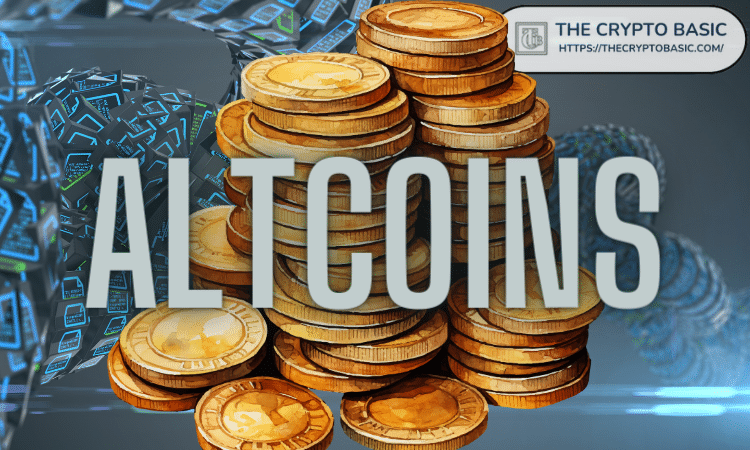
Ki Young Ju, CEO of analytics platform CryptoQuant, believes whales are preparing for an upcoming surge in altcoins.
In a recent revelation about X, Ju underlines that the volume of limit buy orders for altcoins, excluding Bitcoin and Ethereum, is increasing. This pattern suggests the formation of substantial buy walls, highlighting significant buying pressure from large-scale investors.
Ju’s chart identifies two main phases in limit order volume for altcoins: the limit sell phase and the limit buy phase. The limit sell phase saw a notable increase in cumulative sell orders in 2022, demonstrating strong selling pressure from whales and other market participants. This phase coincided with a period of falling altcoin prices due to unfavorable market conditions.

Then, the limit buying phase began, marked by a significant increase in cumulative buy orders. This indicates a period of strategic accumulation where whales establish substantial buy walls.
According to Ju, the increase in buying volume suggests confidence in the future conditions of the altcoin market. This buying pressure creates strong support levels, indicating that whales are preparing for a positive change in the market.
Buying pressure on specific altcoins
Ju also provided a heatmap of the 1-year normalized cumulative buy/sell volume difference for various altcoins, showing the buying and selling pressure over time. Solana (SOL) has seen alternating strong buying and selling phases, with recent activity showing increased buying interest. Cosmos (ATOM) and Polygon (MATIC) have also shown increased buying pressure despite mixed activity trends.
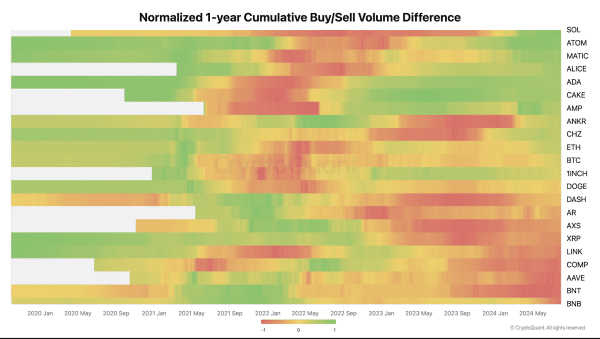

Cardano (ADA) and PancakeSwap (CAKE) have shown balanced buying and selling phases, with recent trends proving increased buying pressure. Coins like AMP and ANKR have also demonstrated increased buying activity. The heatmap reveals that most altcoins are seeing increased buying pressure as whales and large investors accumulate altcoins in anticipation of a rally.
Meanwhile, coins experiencing selling pressure, as indicated by the predominantly red areas on the heatmap, include DOGE, DASH, AXS, XRP, COMP, and AAVE, BNT.
Bitcoin whales are also buying
It is important to note that while whales are accumulating altcoins, Bitcoin whales are also active. Crypto Basic note an increase in buyer activity on Binance, which aligns with an increase in the buy/sell ratio of takers and whale movements. Analyst Ali Martinez highlighted the ratio fluctuations from below 0.8 to above 1.7 between July 27 and 31. Ratios above 1.0 indicate aggressive buying, often preceding price rallies.
From July 27 to July 28, the ratio remained mostly above 1.0, corresponding to the rise in Bitcoin price from around $66,500 to over $67,000. A spike to around 1.5 led to a sharp increase in price to around $68,500. However, on July 30 and 31, the ratio fell below 1.0 several times, corresponding to a drop in price to around $66,000, before a final spike to 1.7 indicated another slight increase in price.
Disclaimer: This content is informational and should not be considered financial advice. The opinions expressed in this article may include the personal opinions of the author and do not reflect the opinion of The Crypto Basic. Readers are encouraged to conduct thorough research before making any investment decisions. The Crypto Basic is not responsible for any financial losses.
-Advertisement-
Altcoins
How to buy a car with cryptocurrency

The automotive and cryptocurrency industries have been merging for the past few years. As digital currencies become more prevalent in everyday activities, it is increasingly likely that they will be integrated into everyday transactions, such as when buying a car. The article unpacks the dynamic relationship between cryptocurrency and car buying today, explaining how digital currencies can be used to buy a vehicle today. It includes elements such as some of the benefits and challenges of buying a car using cryptocurrency and what lies ahead in the future.
Understanding Cryptocurrency Payments in the Automotive Industry
Cryptocurrency is not just a digital asset; it represents a revolutionary approach to decentralized financial transactions. The automotive industry, known for its adaptability, has begun to accept cryptocurrencies as a legitimate form of payment in various markets. For example, luxury car dealerships and online platforms offering car auctions in new york increasingly allow buyers to purchase cars using cryptocurrencies.
There are several factors that determine how much cryptocurrency you need to buy a car. Among them, the most influential will be the current value of the cryptocurrency you want to use at that moment. Unlike traditional currencies, cryptocurrencies can be very volatile. Their value can change drastically in an instant, which affects the amount needed at the time of purchase.
Benefits of Buying Cars with Cryptocurrency
Buying cars with cryptocurrencies offers several advantages:
– Reduced transaction fees: Cryptocurrencies can reduce the fees involved in large financial transactions typical of car purchases.
– Enhanced Privacy: Buyers who value their privacy can benefit from anonymity through blockchain-based transactions.
– Speed and convenience: transactions are faster than those carried out by banks, especially when the operation has an international scope.
Challenges and considerations
Although the benefits are compelling, several challenges must be considered:
– Volatility: At one moment, the price of any cryptocurrency can collapse, or the next minute it can skyrocket, and the price needed to buy a car can double or triple from one day to the next.
– Limited acceptance: Not all dealers accept cryptocurrency, which in turn may limit its use for making purchases.
– Tax implications: This may create different tax implications on purchases via cryptocurrency, depending on your jurisdiction.
Practical steps to buy a car with cryptocurrency
If you want to use cryptocurrency to buy a car, follow these steps:
- Ensure Acceptance: Check if the dealer or auction accepts the use of cryptocurrency.
- Check the conversion rate: You need to know how much your cryptocurrency is currently trading at compared to the price of the car in fiat currency.
- Secure your funds Make sure your digital wallet is secure and funded.
- Know the terms: Be informed and be clear about return policies as well as any additional fees incurred.
- Complete the transaction: Continue the payment via the digital wallet.
Future prospects
There is a good chance that many car dealerships will start accepting digital currencies, especially when blockchain technology pushes the boundaries and cryptocurrencies become stable. This trend is expected to be propelled forward due to the increasing demand for transparency, security, and efficiency in transactions.
Conclusion
The potential for cryptocurrencies to have a real impact on the car buying process is enormous. Of course, there are a few issues that emerge when considering the current market, including volatility and limited acceptance. However, the benefits of using digital currency to execute such transactions can easily outweigh the drawbacks for many buyers. As both sectors continue to grow, buying cars with cryptocurrencies shows a promising future and therefore creates a more connected and developed technological automotive market.
This means that buying a car, whether in cryptocurrency or in another form, is not just about following technological trends; it is rather about enjoying greater freedom and efficiency in financial transactions. Indeed, the closer the digital and automotive worlds become, the more buyers should expect simpler, much safer and also very innovative ways of purchasing.
Disclaimer: This press release article is provided by the client. The client is solely responsible for the content, quality, accuracy, products, advertising or other materials on this page. Readers should conduct their own research before taking any action related to the material available on this page. Crypto Basic is not responsible for the accuracy of the information or for any damage or loss caused or alleged to be caused by the use of or reliance on any content, goods or services mentioned in this press release article.
Please note that The Crypto Basic does not endorse or support any content or products on this page. We strongly advise readers to conduct their own research before acting on the information presented here and to take full responsibility for their decisions. This article should not be considered investment advice.
Disclaimer: This content is informational and should not be considered financial advice. The opinions expressed in this article may include the personal opinions of the author and do not reflect the opinion of The Crypto Basic. Readers are encouraged to conduct thorough research before making any investment decisions. The Crypto Basic is not responsible for any financial losses.
-Advertisement-
Altcoins
Introducing Bit-Chess. The World’s First Fully Decentralized Chess Platform

Bit-Chess announces the pre-sale of the world’s first fully decentralized chess platform, combining the classic strategy game with the innovative world of cryptocurrencies. This platform will change the way millions of people interact with chess online, providing a digital space where players can enjoy their favorite game, compete in global tournaments, and earn rewards through play-to-win mechanics.
Bit-Chess is an entry point for both experienced players and newcomers to the crypto space. It provides tools and guides to help even inexperienced users get started with cryptocurrencies by creating in-game wallets upon first login. It is the first chess game to use Web3 technology, and all participants can earn money while playing.
During the presale, 500 of the 2,000 special NFTs will be available, with the rest distributed through tournaments and auctions. Unless NFT holders agree otherwise, the team will manage 1,500 NFTs, preserving their rarity with a cap of 2,000 pieces. More information about the NFT marketplace will be released after the token’s official launch.
The platform aims to become the world’s leading online chess center, offering:
Play to win features.
Global tournaments with cash or NFT prizes.
Player versus player challenges
Special NFTs and more
Bit-Chess invites players from all over the world to join its unique ecosystem, where playing chess is more than just entertainment: it’s an opportunity to earn and learn in the world of crypto.
For more information and to participate in the presale, Visit the Bit-Chess website.
Disclaimer: This press release article is provided by the client. The client is solely responsible for the content, quality, accuracy, products, advertising or other materials on this page. Readers should conduct their own research before taking any action related to the material available on this page. The Crypto Basic is not responsible for the accuracy of the information or for any damage or loss caused or alleged to be caused by the use of or reliance on any content, goods or services mentioned in this press release article.
Please note that The Crypto Basic does not endorse or support any content or products on this page. We strongly advise readers to conduct their own research before acting on the information presented here and to take full responsibility for their decisions. This article should not be considered investment advice.
Disclaimer: This content is informational and should not be considered financial advice. The opinions expressed in this article may include the personal opinions of the author and do not reflect the opinion of The Crypto Basic. Readers are encouraged to conduct thorough research before making any investment decisions. The Crypto Basic is not responsible for any financial losses.
-Advertisement-
Altcoins
Here’s the price of XRP if it handles 10% of SWIFT transactions
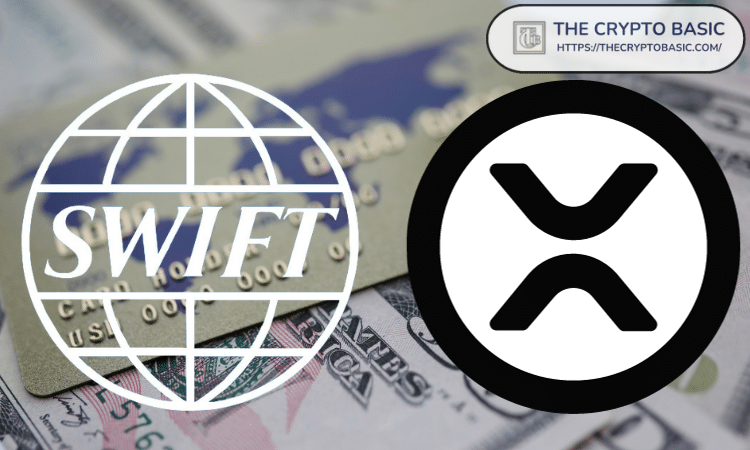
Popular community figure Amélie predicts a massive increase in the price of XRP if its underlying network, XRPL, is used to process 10% of all SWIFT transactions.
In a recent article on X, Amélie took on SWIFT (Society for Worldwide Interbank Financial Telecommunication), suggesting that XRP is a better alternative for cross-border settlements.
Ripple claims Swift is not fast enough
In a recent post on X, the community personality called attention to a Ripple ad claiming that “Swift isn’t fast enough.” The remark was a subtle criticism of Ripple’s transaction processing speeds for the global financial messaging giant.
Interestingly, Ripple has recommended financial institutions to adopt its solution to instantly transfer value across borders.
Amelie compared the processing speed of SWIFT and XRP transactions. According to community figures, cross-border transactions on SWIFT typically take between three and five business days. Conversely, Amelie claimed that XRP transactions can be completed in four seconds.
After the analysis, Amélie echoed Ripple’s sentiments, pointing out that SWIFT is not fast enough compared to XRP.
XRP to Surpass $1,000 if it handles 10% of SWIFT transactions
Therefore, enthusiasts have speculated that all SWIFT transactions will eventually be processed through the XRP Ledger (XRPL), the underlying blockchain of the XRP token.
Interestingly, she suggested that the price of XRP could surpass $1,000 per token if 10% of all SWIFT network transactions were processed through XRPL. However, Amelie did not provide details on how XRP could reach this milestone.
SWIFT VS XRP:
SWIFT: 3 to 5 business days
XRP: Cross-border payments in 4 seconds
SWIFT IS NOT FAST ENOUGH!
I think all Swift transactions will soon be processed via #XRPL 💵💱💴
10% of SWIFT network = $1,000+ per XRP! pic.twitter.com/Jt6mumQHfb
— 𝓐𝓶𝓮𝓵𝓲𝓮 (@_Crypto_Barbie) July 20, 2024
Can XRP replace SWIFT?
Several cryptocurrency enthusiasts have compared XRP to SWIFT in recent years. In particular, the famous crypto asset manager Grayscale characterized XRP as an alternative to SWIFT. Notably, some users have taken this comparison further by projecting that XRP could eventually replace SWIFT because of its inefficiencies, including slow transaction processing.
The potential replacement of XRP with an established system like SWIFT would require more than just community support. Factors such as the final resolution of the SEC lawsuit, increased institutional adoption of XRP, and large-scale commercial partnerships leveraging Ripple’s payment solution could play a critical role in XRP’s potential replacement or integration with SWIFT.
Disclaimer: This content is informational and should not be considered financial advice. The opinions expressed in this article may include the personal opinions of the author and do not reflect the opinion of The Crypto Basic. Readers are encouraged to conduct thorough research before making any investment decisions. The Crypto Basic is not responsible for any financial losses.
-Advertisement-
-
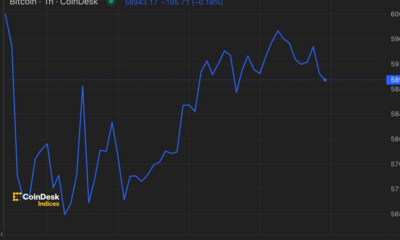
 News1 year ago
News1 year agoBitcoin (BTC) price recovery faces test on non-farm payrolls
-

 Bitcoin12 months ago
Bitcoin12 months ago1 Top Cryptocurrency That Could Surge Over 4,300%, According to This Wall Street Firm
-
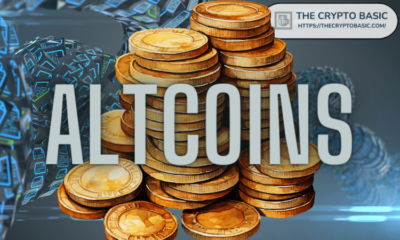
 Altcoins12 months ago
Altcoins12 months agoOn-chain data confirms whales are preparing for altcoin surge with increased buy orders
-

 Bitcoin12 months ago
Bitcoin12 months agoThe US government may start accumulating Bitcoin, but how and why?
-

 News1 year ago
News1 year agoNew ByBit Listings for 2024: 10 Potential Listings
-

 News1 year ago
News1 year ago11 Best Crypto TikTok Accounts & Influencers in 2024
-

 Altcoins1 year ago
Altcoins1 year agoMarket giants have taken action!
-

 News1 year ago
News1 year ago11 Best Shitcoins to Buy in 2024: The Full List
-

 Ethereum1 year ago
Ethereum1 year agoTop Meme Coins by Market Capitalization in 2024
-

 News1 year ago
News1 year ago1.08 Trillion SHIBs Dumped on Major Crypto Exchange, What’s Going On?
-

 News1 year ago
News1 year ago19 Best Crypto Games to Play in 2024
-

 Altcoins1 year ago
Altcoins1 year agoAltcoin Recommended by Crypto Expert for Today’s Portfolio





